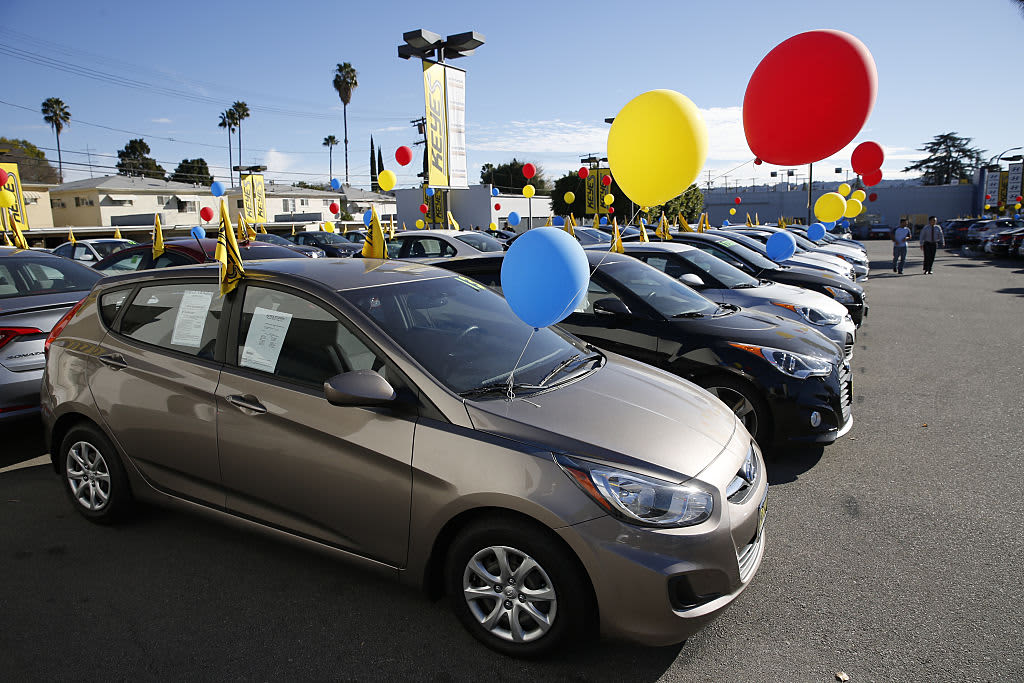If you are suffering from post-pandemic sticker shock, you are not alone.
From gas and groceries to computers and clothing, everyday items are suddenly more expensive.
As the country recovers in the wake of the coronavirus outbreak and Americans put their stimulus checks and stashed cash to work, some of these higher costs are simply the price consumers must pay for an economic rebound. (In other words, as the economy picks up, so will inflation.)
In other cases, supply chain setbacks have put a strain on certain goods, which is also driving prices higher, but only temporarily.
More from Personal Finance:
Prices are going up — here’s what inflation means to you
Fighting inflation with a reverse mortgage
Inflation worries? Consider this investment
“It’s sort of like the consumer version of musical chairs; there’s a bit of a rush for a limited supply of things,” said Mark Hamrick, senior economic analyst at Bankrate.com.
But not everything is going to be more expensive forever, Hamrick said. And, if you are weighing a major purchase, it may pay to wait it out.
Here are a few examples:
Home renovations
Anyone that’s considering a bathroom remodel or kitchen renovation will see dramatically higher prices for raw materials.
Sky-high demand for home improvements coupled with supply-chain slowdowns have caused some building supplies, including lumber, steel, gypsum and copper, to hit record highs this year.
A broad mix of residential construction materials is up 12.4% over the previous 12 months, according to the producer price index.
As a result, nearly half of all builders say they are adding escalation clauses to their sale prices because of rising material costs, according to a recent survey from the National Association of Home Builders.
“It’s an unusual period created by the pandemic,” said Jack Kleinhenz, chief economist for the National Retail Federation. “I think people are recognizing that we should wait a little bit until things get back to a better situation.”
Travel
But if you are thinking of getting away instead of redoing your house, you’re out of luck.
A sudden surge in post-pandemic wanderlust is also making vacations more expensive.
Domestic airfares are up 9% since April 1 while international fares are up 17%, according to recent research from Bernstein. And a rise in bookings is driving up prices even more.
Hotel rates are also higher and have even surpassed pre-pandemic prices in some popular destinations, according to travel booking technology company Koddi.
Consumers with vouchers from last year’s canceled plans could catch a break if they can put those credits to use.
“A lot of us probably have some stored value in services that we didn’t take advantage of during the pandemic,” Hamrick said. “At the very least, it pays to ask.”
Although, in that case, act sooner rather than later to score a reservation before flights and hotels are fully booked for the summer — or worse, those vouchers expire.
Cars
Those planning to hit the open road now that pandemic-related restrictions have lifted may stall out at the dealership.
High consumer demand along with a manufacturing shortage of microchips — key parts needed for today’s autos to operate — have squeezed new-car inventory at dealerships across the country. And the used-car market isn’t much better.
New cars cost an average of about $40,000 in April, according to Kelley Blue Book, up about 2.2% from last year. At the same time, the typical cost of a used car is now up to roughly $23,000, according to Edmunds.
“”New vehicles — particularly new trucks and SUVs — are basically the 2021 equivalent of toilet paper and hand sanitizer a year ago,” Jessica Caldwell, Edmunds’ executive director of insights, said in a statement.
However, the chip shortage is only expected to impact production through the end of the summer or early fall and prices generally come down toward the end of the year and into January when sellers look to unload last year’s models.
Most of these price increases are temporary.Anand Talwarexecutive for Ally Bank
“Most of these price increases are temporary, so think carefully about whether it’s worth dipping into your savings and paying a premium,” said Anand Talwar, deposits and consumer strategy executive for Ally Bank.
“Instead, wait until inventories build up again and prices drop,” he advised.
If you must buy something that suddenly costs more, any extra savings will shield you from having to rely on credit cards or other types of high-interest debt.
“If the pandemic has taught us anything, it’s that your emergency fund isn’t a nice-to-have, it’s a need-to-have,” Talwar said.
To get there, consider setting up an automated deposit to your rainy-day fund, Talwar advised.
“You’ll build and maintain your financial breathing room and keep the past year’s hard-won savings from walking out the reopening door.”
